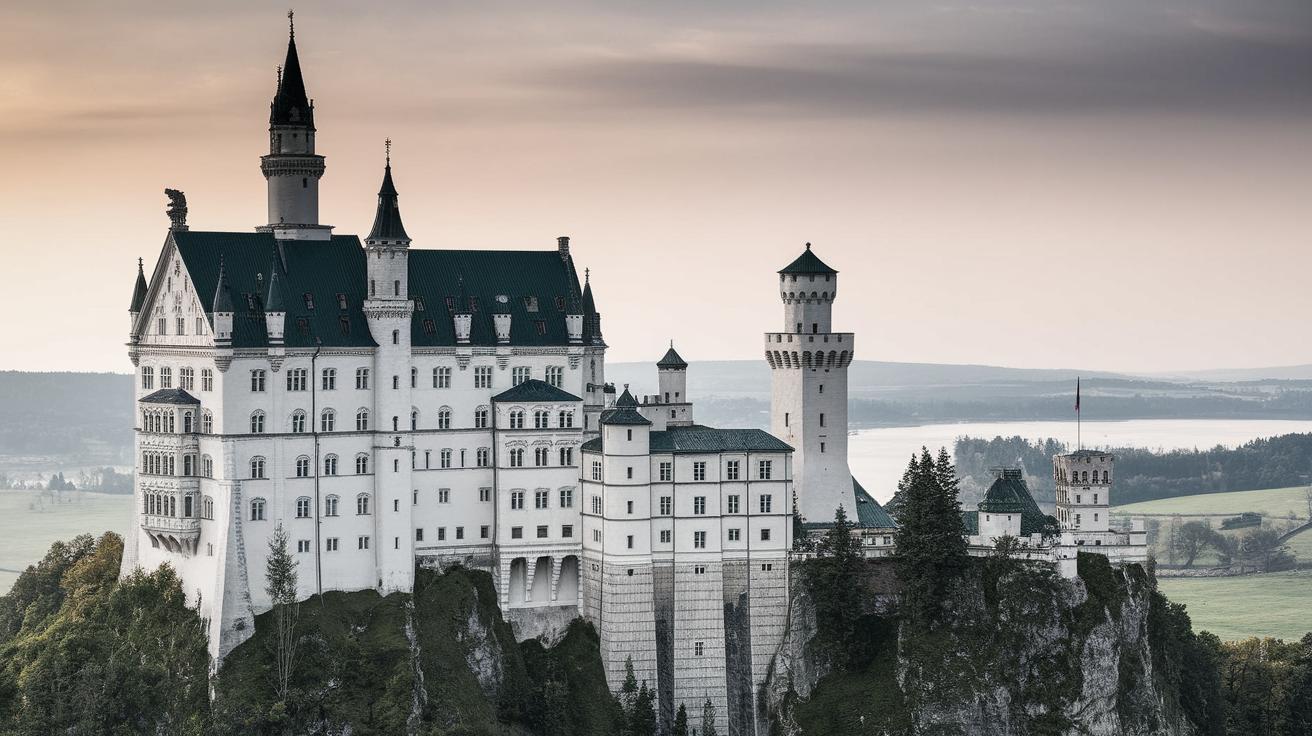Castle vs. Palace: Understanding the Distinction
Have you ever wondered about the difference between a castle and a palace? While both are grand structures with rich histories, they serve very different purposes and have distinct features. This article will delve into the historical and architectural nuances that distinguish castles and palaces. By exploring their roles as fortifications and symbols of power, as well as their evolution through time, we aim to uncover the unique characteristics of these architectural wonders. Whether you’re a history buff or just curious about the intricacies of these magnificent buildings, this exploration offers insights drawn from centuries of culture and power dynamics.
Castles: Monuments of Medieval Fortification
Castles are enduring symbols of medieval fortification, built primarily for defense purposes and to withstand sieges. They were often strategically located on elevated ground, in accessible terrain, or near water bodies, optimizing their defensive capabilities. The architectural design of castles includes features like thick walls, moats, drawbridges, and battlements, all of which played integral roles in repelling invaders and protecting inhabitants. The development of castles began in the 9th and 10th centuries, gaining prominence throughout Europe during the Middle Ages.
These imposing structures served not only as military strongholds but also as residences for nobility and symbols of feudal power. Inside, a castle would house barracks, living quarters, and storage facilities, often accompanied by an intricate network of passages and secret tunnels. Castles also acted as administrative centers, enforcing the rule and authority of the local lord over their domain. As such, they played a crucial role in the organization of medieval society, embodying the territorial power and control of feudal lords.
Palaces (the German “Schloss”): Symbols of Aristocratic Power
Unlike castles, palaces were built as lavish residences that signified the wealth and influence of aristocrats or ruling monarchs. The German term “Schloss” is often used interchangeably with “palace,” though it can denote both palatial residences and castles depending on historical context. Palaces are typically located in urban or suburban settings rather than strategic defensive locations. Their primary purpose is to serve as opulent living spaces rather than fortifications.
Architecturally, palaces are characterized by grand and decorative facades, expansive gardens, and sumptuous interiors designed for comfort and display rather than defense. They are cultural and political hubs where rulers exercised power and influence, hosting court gatherings, diplomatic events, and extravagant celebrations. The aesthetic focus of palaces reflects their role as symbols of stability, power, and art patronage, contrasting the utilitarian nature of castles.
Palast, Palais, Palazzo: Grand Residences of the Powerful
The terms “Palast,” “Palais,” and “Palazzo” are used across different European languages to describe grand residences akin to palaces. Each term brings with it regional nuances and historical contexts that shape the characteristics of these residences. A “Palast” typically refers to monumental structures of aristocratic significance in German-speaking regions, while “Palais” often describes elegant townhouses or official government buildings in French-speaking areas.
In Italy, the “Palazzo” represents a tradition of architectural grandeur, rooted in the Renaissance ideal of proportion and harmony. These urban palatial designs emphasized aesthetic beauty and were often situated within prominent city centers. While differing in origin and cultural significance, these grand residences share a common purpose: to signify the social and political clout of their inhabitants and to reflect the cultural strides of their eras.
Castles and Palaces as a Mirror of History
Both castles and palaces serve as mirrors reflecting the epochs in which they were constructed. Castles tell the story of medieval warfare and feudal society, built in response to the necessities of defense and governance. As military innovations evolved, many castles transitioned from fortresses to residences, preserving the architectural legacy while adapting to peaceful times.
Palaces, conversely, showcase the evolution of taste, luxury, and the celebration of art over the centuries. They reflect the political stability and economic prosperity of their time, each with a distinctive architectural style influenced by the prevailing artistic movements and cultural exchanges. Their evolution marks the shift from feudal power dynamics to centralized state power, illustrating broader historical trends through architecture.
Key Takeaways
- Castles are fortified structures primarily used for defense, while palaces are luxurious residences for aristocratic or royal inhabitants.
- Architectural features of castles include thick walls and moats, whereas palaces boast opulent interiors and beautiful grounds.
- Both structures offer valuable insights into the historical and cultural contexts of their times, embodying shifts in power and societal organization.
Join my Newsletter!
Stay updated with my latest articles and insights into historical architecture by joining my newsletter. Explore the captivating world of castles, palaces, and beyond.
Trackbacks/Pingbacks
- No trackbacks or pingbacks yet.
Submit a Comment Cancel reply
Your email address will not be published. Required fields are marked *
Next Steps
| Feature | Castle | Palace |
|---|---|---|
| Primary Purpose | Defense and military stronghold | Residence and symbol of power |
| Location | Strategic defensive positions | Urban or suburban settings |
| Architectural Features | Thick walls, moats, battlements | Opulent facades, grand interiors |
| Historical Significance | Medieval society and feudalism | Art, culture, and political power |
